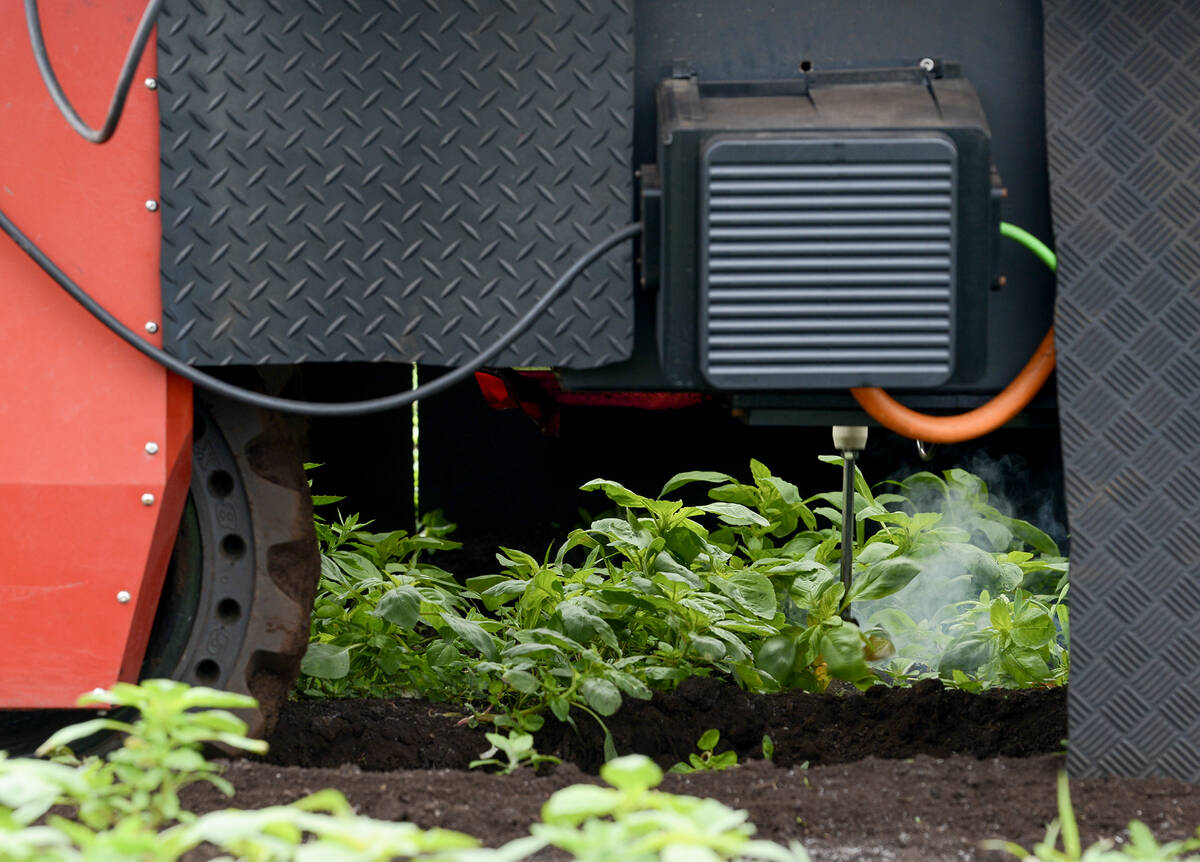Glacier FarmMedia – A July heat wave in Alberta may have minimized crop damage from cereal leaf diseases.
Variable precipitation this spring had pathologists and producers braced to handle the leaf spot complex of diseases but that may not be necessary, says a prominent plant pathologist.
“With the weather that we’ve had over the last two to three weeks, it’s really shutting things down,” said Agriculture and Agri-Food Canada researcher Kelly Turkington in a July 24 interview. “So it’ll mean that likely there won’t be huge issues in terms of effects on yield loss and grain filling and so on.”
Read Also

Robots, lasers, and AI, oh my!
Advanced field robotics, including laser and high-voltage electricity, is transforming agriculture with AI-driven precision, lower labour costs, and reduced soil disturbance.
The leaf spot complex includes scald and net blotch in barley as well as tan spot and septoria in wheat.
“We’ve had a a couple of reports of powdery mildew in winter wheat and spring wheat, but really more sort of odd cases here and there. We have seen some bacterial leaf streak in a few barley fields….
“There may be the odd field where you’ve had maybe localized thunder systems, maybe under irrigation where you’ve had some issues. There’s a few things that have popped up over the summer,” said Turkington.
A late arrival of stripe rust spores blew into the province in late June, he said, likely originating in Washington state.
“Towards the early part of July there were reports (of stripe rust) out of Warner County and Vulcan County from a consultant and some reports in Lacombe County and then down the Highway 2 corridor towards Calgary, both west and east,” he said.
The County of Warner borders the U.S. and Vulcan County is north of Lethbridge. Lacombe County is in the central region north of Red Deer.
Depending on when growers seeded, stripe rust in cereal fields may require a fungicide application, said Turkington. Early-seeded crops may be out of luck from a timing perspective but producers who seeded later may still have time to tackle rust.
“That late arrival is challenging because in many cases the crop would likely be beyond the window for application of fungicide.
“Often we’ve seen in the past our worst stripe rust problems in those late-seeded fields where you might be looking at silage or swath grazing, especially where the variety is highly susceptible,” said Turkington.
“If the rust becomes established before head emergence — let’s say it’s at leaf emergence or earlier — that’s where you get your devastating yield loss that can range in the 50 to 90 per cent yield loss range.”
However, mid-season spring rust may not have much impact on crops that are more advanced.
“Especially after head emergence and flowering, the impact on yield and grain filling is usually much less. You might see five to 10 per cent (loss) perhaps in very susceptible varieties. At the bit better levels of resistance, that yield loss would be pretty minimal,” said Turkington.
“Most of the spring-seeded cereals would probably be well into head emergence and anthesis and even past anthesis into the grain-filling period.”
The late June spread of stripe rust spores into Alberta is likely because this was the earliest in 10 to 20 years that growers in Washington saw stripe rust develop in winter wheat.
“I think it’s based on overwintering of the stripe rust fungus on winter wheat there and then early observations this summer,” Turkington said. “They had pockets where it was significant and then of course we had some wind trajectories that moved (spores) up into the central Prairie, eastern Prairie region.”
Washington farmers have been treating infections, he added.
“They encouraged widespread spraying at the herbicide timing stage, which works very well for the rust fungi given their nature as biotrophic pathogens. They don’t kill plant tissue initially, so there’s still the ability of that fungicide which typically moves to the (plant’s) water transpiration stream or water conducting tissue, so it gets into where the rust fungi are.”
Biotrophic pathogens form a long-term feeding relationship with living cells of the host rather than killing it.
However, spores did blow into Canada, even taking an unusual turn into Manitoba.
“They had widespread spraying of fungicide at the herbicide timing for stripe rust in the Pacific Northwest. That held the levels of inoculant down in commercial fields,” Turkington said.
Some stripe rust may have overwintered on winter wheat in Alberta, though this tends to be rare.
“Probably the last time we saw significant overwintering was maybe in 2014-15,” said Turkington.
Overwintering stripe rust requires specific conditions including strong development of winter wheat in fall followed by a mild winter with sufficient snow cover to provide insulation for the fungus.
















